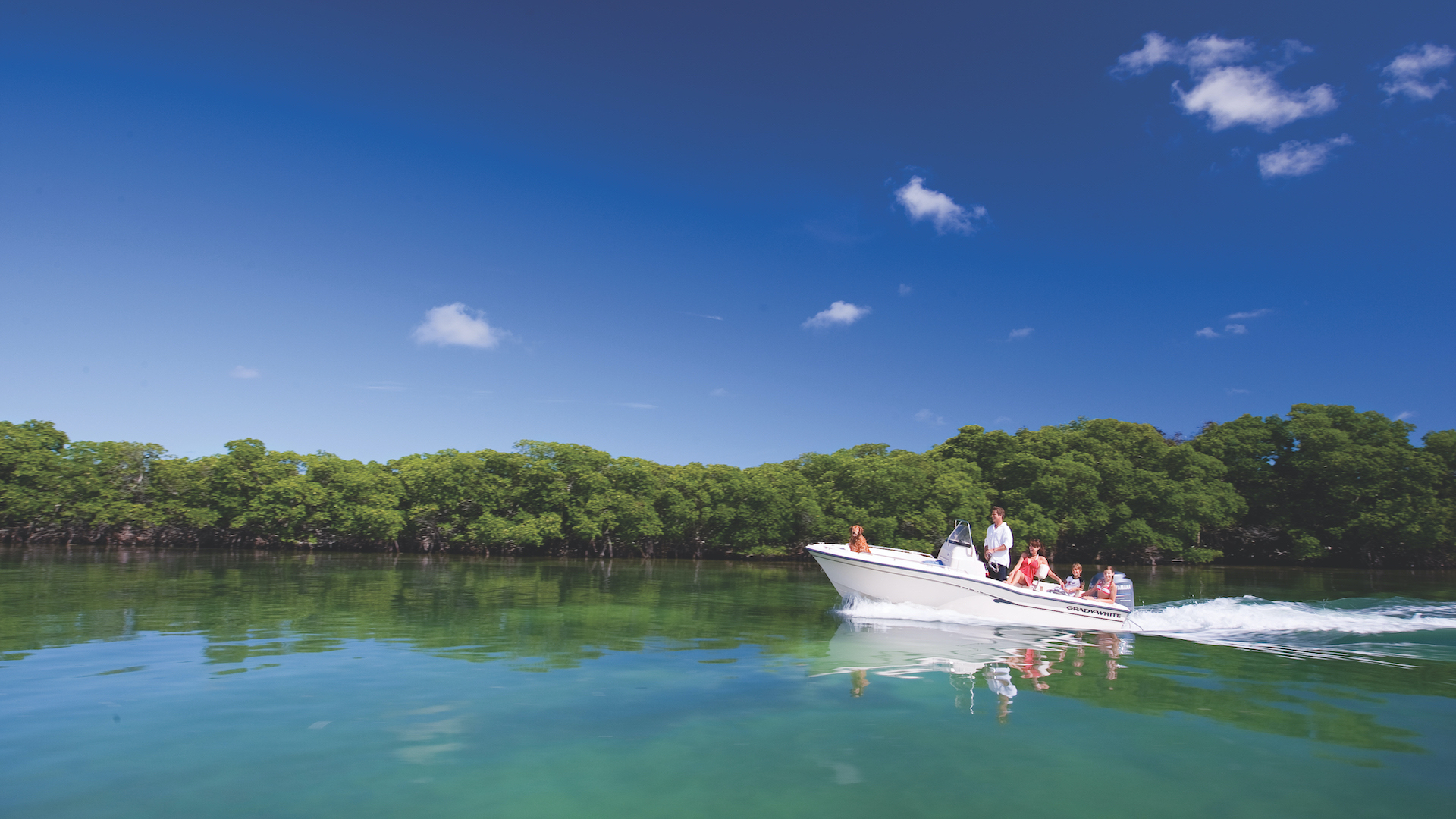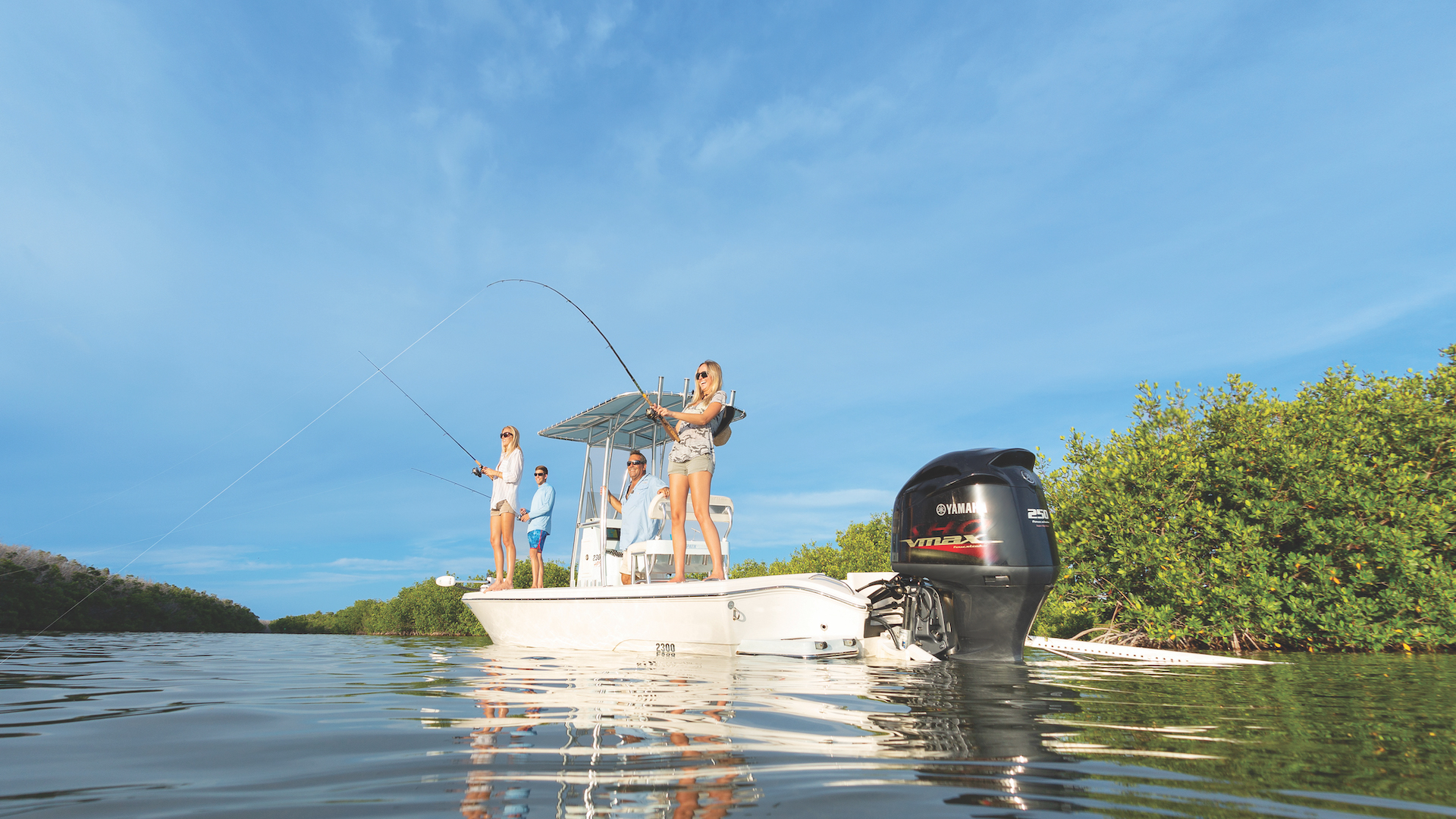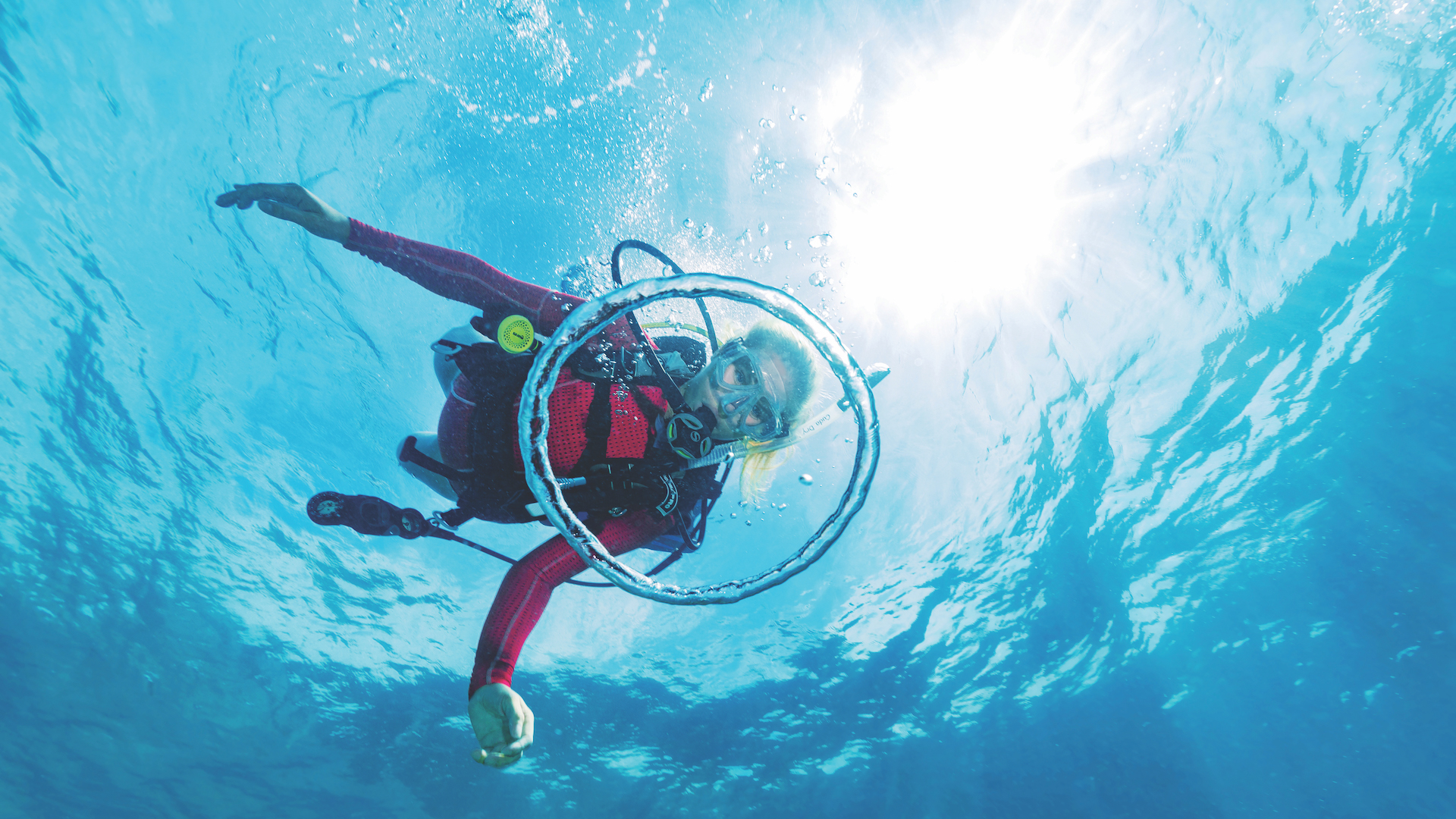Sinking The Vandenberg ... From Ship To Shipwreck
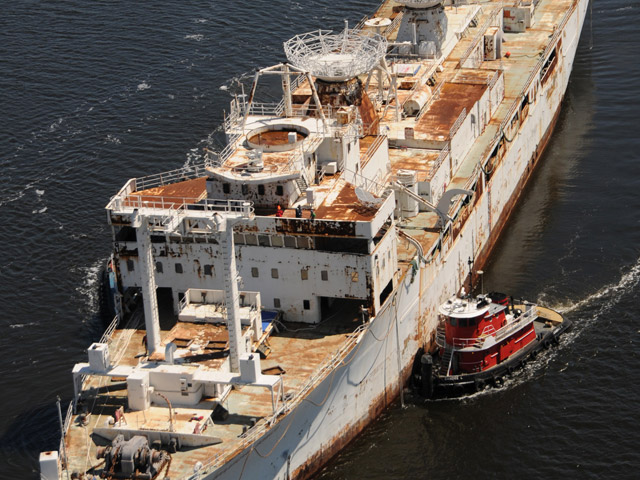 Tugboats ease the former Air Force missile tracking ship Gen. Hoyt S. Vandenberg down the Elizabeth River in Norfolk, Va., Sunday, April 12, 2009, on its way to Key West, Fla. The 523-foot-long ship, that once monitored Mercury, Gemini and Apollo space launches off Cape Canaveral, Fla., is to be intentionally sunk six miles off Key West in late May to become an artificial reef in the Florida Keys National Marine Sanctuary. Estimated project costs to create a new attraction for sport divers and anglers is $8.6 million. (Andy Newman/Florida Keys News Bureau/HO)
Tugboats ease the former Air Force missile tracking ship Gen. Hoyt S. Vandenberg down the Elizabeth River in Norfolk, Va., Sunday, April 12, 2009, on its way to Key West, Fla. The 523-foot-long ship, that once monitored Mercury, Gemini and Apollo space launches off Cape Canaveral, Fla., is to be intentionally sunk six miles off Key West in late May to become an artificial reef in the Florida Keys National Marine Sanctuary. Estimated project costs to create a new attraction for sport divers and anglers is $8.6 million. (Andy Newman/Florida Keys News Bureau/HO)
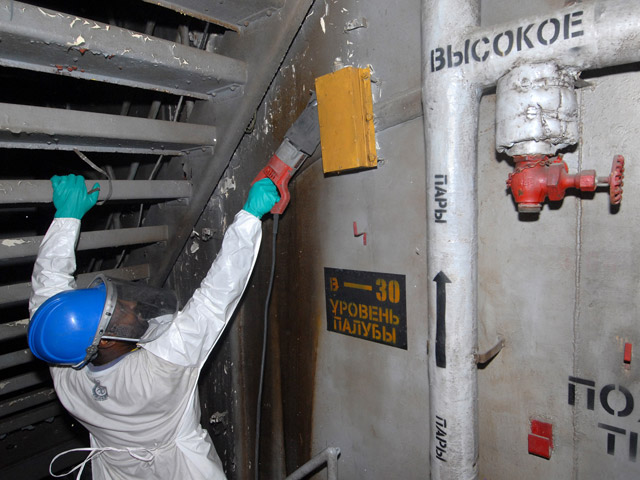 A worker cuts off an electrical box on the decommissioned Gen. Hoyt S. Vandenberg while it is docked in a Norfolk, Va., shipyard Tuesday, Oct. 9, 2007. The Russian lettering on the bulkhead and pipes remain from the former U.S. Air Force missile-tracking vessel's role in the 1999 movie Virus.
A worker cuts off an electrical box on the decommissioned Gen. Hoyt S. Vandenberg while it is docked in a Norfolk, Va., shipyard Tuesday, Oct. 9, 2007. The Russian lettering on the bulkhead and pipes remain from the former U.S. Air Force missile-tracking vessel's role in the 1999 movie Virus.
 Russian letters remain on the Gen. Hoyt S. Vandenberg, symbolizing its role as a Russian science ship in the 1999 movie Virus. The two top lines, according to a Russian language expert, translate to "life jackets," while the bottom two lines translate to "Deck Level A." (Photo by Andy Newman/Florida Keys News Bureau)
Russian letters remain on the Gen. Hoyt S. Vandenberg, symbolizing its role as a Russian science ship in the 1999 movie Virus. The two top lines, according to a Russian language expert, translate to "life jackets," while the bottom two lines translate to "Deck Level A." (Photo by Andy Newman/Florida Keys News Bureau)
 The retired U.S. missile tracking ship Gen. Hoyt S. Vandenberg arrives in Key West, Fla., Wednesday, April 22, 2009, after it was towed here from Norfolk, Va. The 523-foot-long ship, that once tracked space launches off Cape Canaveral, Fla., and also monitored Soviet missile launches during the Cold War, is to be intentionally sunk off Key West in late May to become an artificial reef in the Florida Keys National Marine Sanctuary. Estimated project costs to create a new attraction for sport divers and anglers is $8.6 million. (Andy Newman/Florida Keys News Bureau/HO)
The retired U.S. missile tracking ship Gen. Hoyt S. Vandenberg arrives in Key West, Fla., Wednesday, April 22, 2009, after it was towed here from Norfolk, Va. The 523-foot-long ship, that once tracked space launches off Cape Canaveral, Fla., and also monitored Soviet missile launches during the Cold War, is to be intentionally sunk off Key West in late May to become an artificial reef in the Florida Keys National Marine Sanctuary. Estimated project costs to create a new attraction for sport divers and anglers is $8.6 million. (Andy Newman/Florida Keys News Bureau/HO)
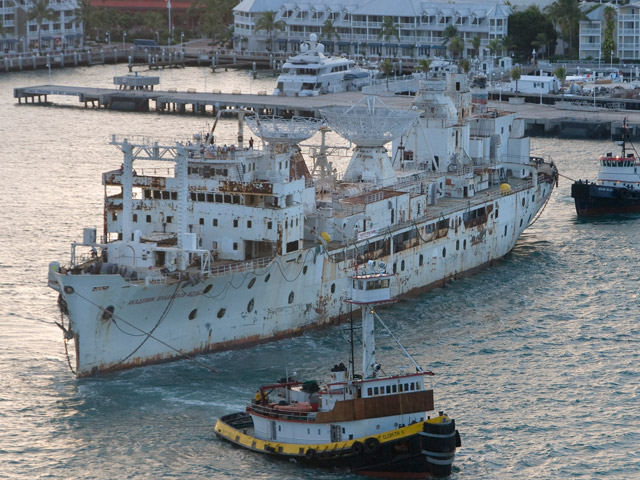 Tugboats tow the decommissioned U.S. military missile-tracking Gen. Hoyt S. Vandenberg Tuesday, May 26, 2009, out of the harbor in Key West, Fla. The 523-foot-long ship, that once tracked space launches off Cape Canaveral, Fla., and also monitored Soviet missile launches during the Cold War, is scheduled be scuttled off Key West Wednesday, May 27, to become an artificial reef in the Florida Keys National Marine Sanctuary. (Andy Newman/Florida Keys News Bureau/HO)
Tugboats tow the decommissioned U.S. military missile-tracking Gen. Hoyt S. Vandenberg Tuesday, May 26, 2009, out of the harbor in Key West, Fla. The 523-foot-long ship, that once tracked space launches off Cape Canaveral, Fla., and also monitored Soviet missile launches during the Cold War, is scheduled be scuttled off Key West Wednesday, May 27, to become an artificial reef in the Florida Keys National Marine Sanctuary. (Andy Newman/Florida Keys News Bureau/HO)
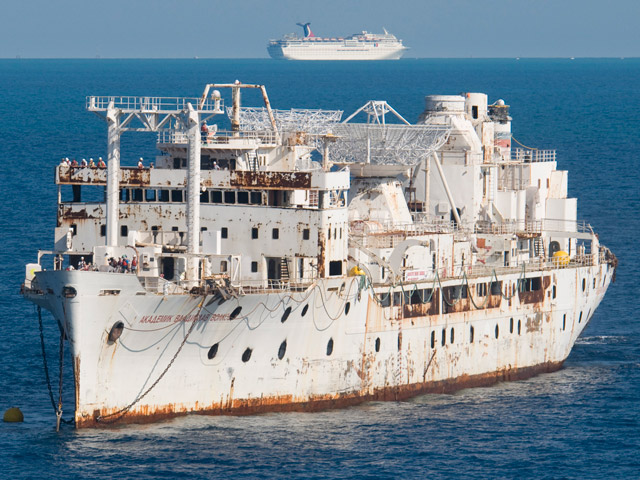 In this photo released by the Florida Keys News Bureau, a tugboat postions the decommissioned U.S. military missile-tracking Gen. Hoyt S. Vandenberg Tuesday, May 26, 2009, above its final resting place about seven miles south of Key West, Fla., as a cruise ship passes enroute to Key West Harbor. The 523-foot-long Vandenberg is scheduled to be intentionally sunk off Key West Wednesday, May 27, as an artificial reef in the Florida Keys National Marine Sanctuary. Some 70 percent of the $8.6 million budget was expended to rid the vessel of contaminants. (Andy Newman/Florida Keys News Bureau/HO)
In this photo released by the Florida Keys News Bureau, a tugboat postions the decommissioned U.S. military missile-tracking Gen. Hoyt S. Vandenberg Tuesday, May 26, 2009, above its final resting place about seven miles south of Key West, Fla., as a cruise ship passes enroute to Key West Harbor. The 523-foot-long Vandenberg is scheduled to be intentionally sunk off Key West Wednesday, May 27, as an artificial reef in the Florida Keys National Marine Sanctuary. Some 70 percent of the $8.6 million budget was expended to rid the vessel of contaminants. (Andy Newman/Florida Keys News Bureau/HO)
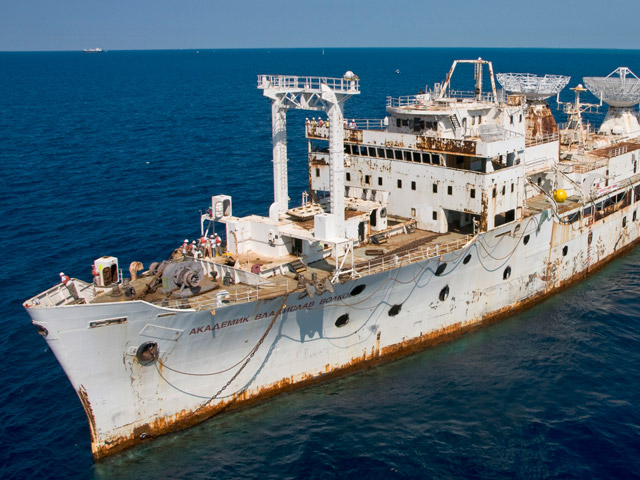 In this photo released by the Florida Keys News Bureau, a tugboat nudges the decommissioned U.S. military missile-tracking Gen. Hoyt S. Vandenberg into position Tuesday, May 26, 2009, above its final resting place about seven miles south of Key West, Fla.. The 523-foot-long Vandenberg is scheduled to be intentionally sunk off Key West Wednesday, May 27, as an artificial reef in the Florida Keys National Marine Sanctuary. Some 70 percent of the $8.6 million budget was expended to rid the vessel of contaminants. (Andy Newman/Florida Keys News Bureau/HO)
In this photo released by the Florida Keys News Bureau, a tugboat nudges the decommissioned U.S. military missile-tracking Gen. Hoyt S. Vandenberg into position Tuesday, May 26, 2009, above its final resting place about seven miles south of Key West, Fla.. The 523-foot-long Vandenberg is scheduled to be intentionally sunk off Key West Wednesday, May 27, as an artificial reef in the Florida Keys National Marine Sanctuary. Some 70 percent of the $8.6 million budget was expended to rid the vessel of contaminants. (Andy Newman/Florida Keys News Bureau/HO)
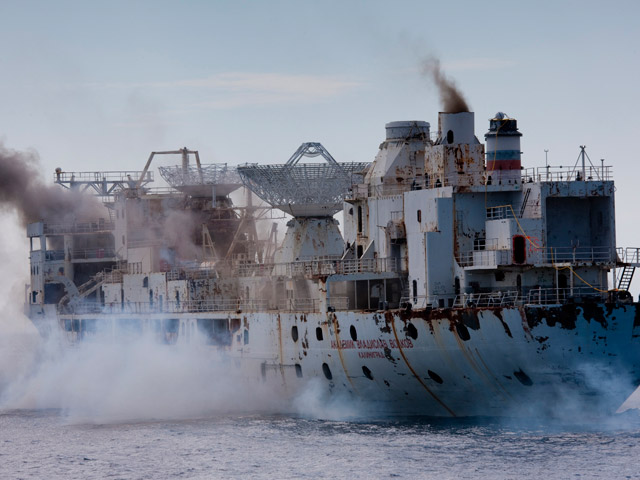 In this photo released by the Florida Keys News Bureau, the former U.S. Air Force missile-tracking ship Gen. Hoyt S. Vandenberg begins to sink after cutting charges were detonated Wednesday. May 27, 2009, seven miles off Key West, Fla. The 523-foot-long Vandenberg, that played a key role in the Cold War and tracked NASA spacecraft launches in the 1960s, 70s and early 80s, was scuttled to create an artificial reef to attract recreational divers and anglers. It sank in less then two minutes. (Stephen Frink/Florida Keys News Bureau/HO)
In this photo released by the Florida Keys News Bureau, the former U.S. Air Force missile-tracking ship Gen. Hoyt S. Vandenberg begins to sink after cutting charges were detonated Wednesday. May 27, 2009, seven miles off Key West, Fla. The 523-foot-long Vandenberg, that played a key role in the Cold War and tracked NASA spacecraft launches in the 1960s, 70s and early 80s, was scuttled to create an artificial reef to attract recreational divers and anglers. It sank in less then two minutes. (Stephen Frink/Florida Keys News Bureau/HO)
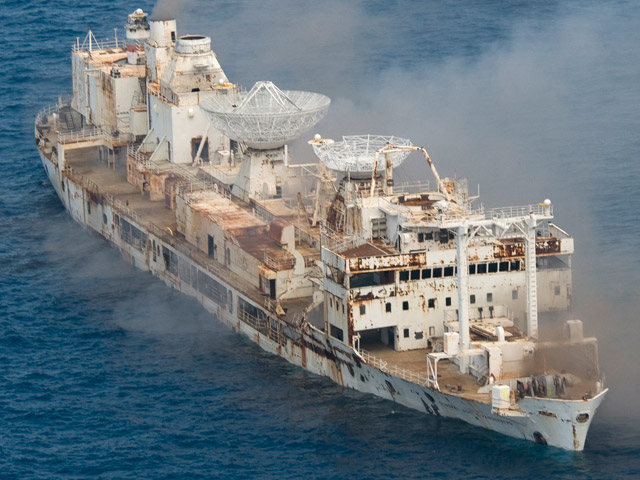 Sinking the Vandenberg
Sinking the Vandenberg
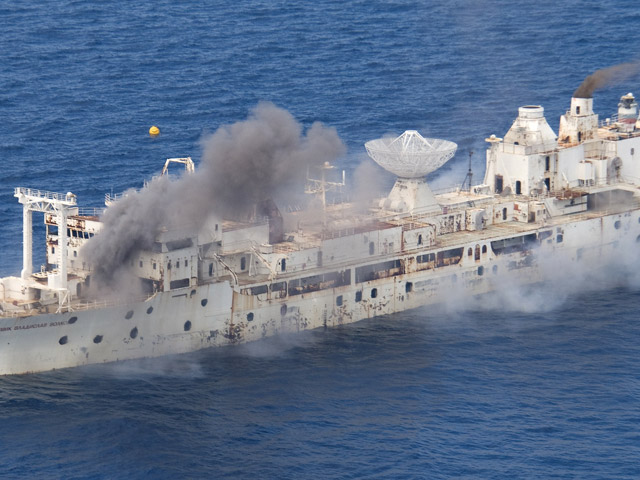 Sinking the Vandenberg
Sinking the Vandenberg
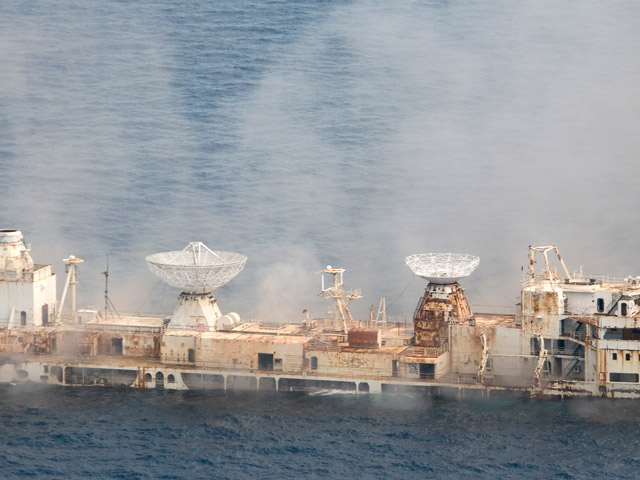 In this photo released by the Florida Keys News Bureau, the former U.S. Air Force missile-tracking ship Gen. Hoyt S. Vandenberg begins to sink after cutting charges were detonated Wednesday. May 27, 2009, seven miles off Key West, Fla. The 523-foot-long Vandenberg, that played a key role in the Cold War and tracked NASA spacecraft launches in the 1960s, 70s and early 80s, was scuttled to create an artificial reef to attract recreational divers and anglers. It sank in less then two minutes. (Andy Newman/Florida Keys News Bureau/HO)
In this photo released by the Florida Keys News Bureau, the former U.S. Air Force missile-tracking ship Gen. Hoyt S. Vandenberg begins to sink after cutting charges were detonated Wednesday. May 27, 2009, seven miles off Key West, Fla. The 523-foot-long Vandenberg, that played a key role in the Cold War and tracked NASA spacecraft launches in the 1960s, 70s and early 80s, was scuttled to create an artificial reef to attract recreational divers and anglers. It sank in less then two minutes. (Andy Newman/Florida Keys News Bureau/HO)
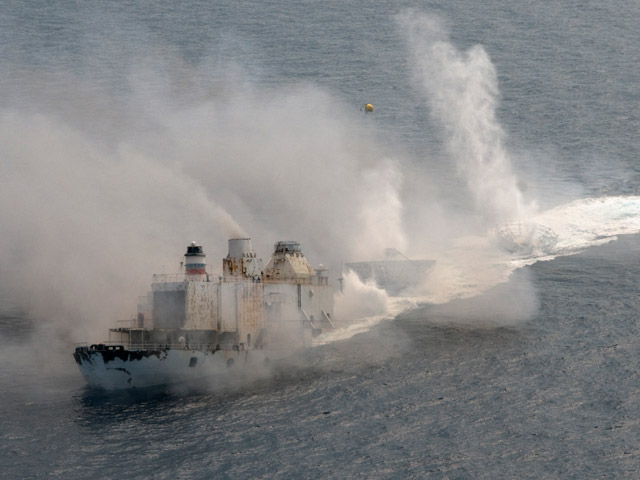 The former U.S. Air Force missile-tracking ship Gen. Hoyt S. Vandenberg disappears beneath the surface of the ocean after cutting charges were detonated Wednesday. May 27, 2009, seven miles off Key West, Fla. The 523-foot-long Vandenberg, that played a key role in the Cold War and tracked NASA spacecraft launches in the 1960s, 70s and early 80s, was scuttled to create an artificial reef to attract recreational divers and anglers. It sank in less then two minutes. (Andy Newman/Florida Keys News Bureau/HO)
The former U.S. Air Force missile-tracking ship Gen. Hoyt S. Vandenberg disappears beneath the surface of the ocean after cutting charges were detonated Wednesday. May 27, 2009, seven miles off Key West, Fla. The 523-foot-long Vandenberg, that played a key role in the Cold War and tracked NASA spacecraft launches in the 1960s, 70s and early 80s, was scuttled to create an artificial reef to attract recreational divers and anglers. It sank in less then two minutes. (Andy Newman/Florida Keys News Bureau/HO)
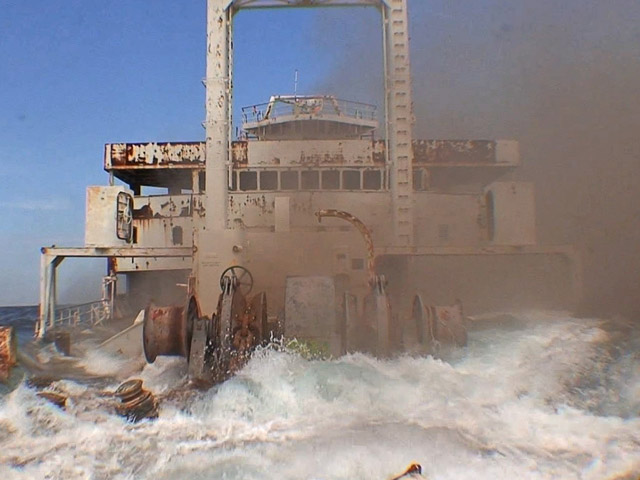 A remote onboard camera records the former U.S. Air Force missile-tracking ship Gen. Hoyt S. Vandenberg sinking after cutting charges were detonated Wednesday, May 27, 2009, seven miles off Key West, Fla. The 523-foot-long Vandenberg, that played a key role in the Cold War and tracked NASA spacecraft launches in the 1960s, 70s and early 80s, was scuttled to create an artificial reef to attract recreational divers and anglers. It sank in one minute and 54 seconds. (Steve Panariello and Andy Newman/Florida Keys News Bureau/HO)
A remote onboard camera records the former U.S. Air Force missile-tracking ship Gen. Hoyt S. Vandenberg sinking after cutting charges were detonated Wednesday, May 27, 2009, seven miles off Key West, Fla. The 523-foot-long Vandenberg, that played a key role in the Cold War and tracked NASA spacecraft launches in the 1960s, 70s and early 80s, was scuttled to create an artificial reef to attract recreational divers and anglers. It sank in one minute and 54 seconds. (Steve Panariello and Andy Newman/Florida Keys News Bureau/HO)
 Only air bubbles and smoke remains after the former U.S. Air Force missile-tracking ship Gen. Hoyt S. Vandenberg was sunk Wednesday. May 27, 2009, seven miles off Key West, Fla. The 523-foot-long Vandenberg, that played a key role in the Cold War and tracked NASA spacecraft launches in the 1960's, 70's and early 80's, was scuttled to create an artificial reef to attract recreational divers and anglers. The ship is resting in 140 feet of water in the Florida Keys National Marine Sanctuary (Andy Newman/Florida Keys News Bureau/HO)
Only air bubbles and smoke remains after the former U.S. Air Force missile-tracking ship Gen. Hoyt S. Vandenberg was sunk Wednesday. May 27, 2009, seven miles off Key West, Fla. The 523-foot-long Vandenberg, that played a key role in the Cold War and tracked NASA spacecraft launches in the 1960's, 70's and early 80's, was scuttled to create an artificial reef to attract recreational divers and anglers. The ship is resting in 140 feet of water in the Florida Keys National Marine Sanctuary (Andy Newman/Florida Keys News Bureau/HO)
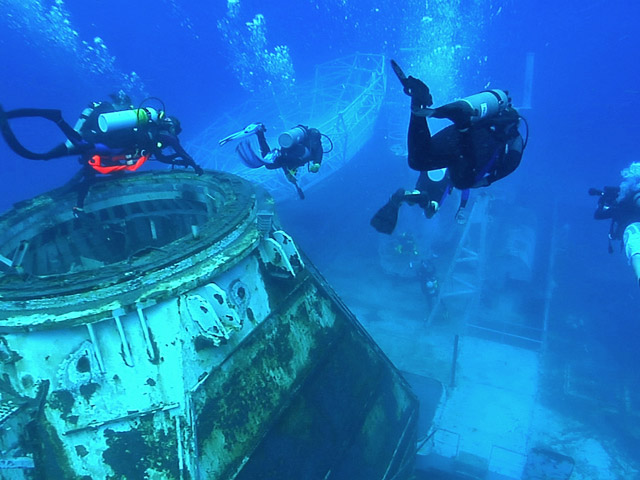 Divers explore the superstructure of the Gen. Hoyt S. Vandenberg artificial reef in the Florida Keys National Marine Sanctuary off Key West, Fla., Friday, May 29, 2009. After a dramatic May 27 scuttling, the Vandenberg opened to the public Saturday, May 30. The Vandenberg's hull rests on the sandy bottom in about 145 feet of water, but the 523-foot-long former U.S. Air Force missile tracking ship is so massive that its superstructure begins just 45 feet below the sea surface. (Haig Jacobs/Florida Keys News Bureau/HO)
Divers explore the superstructure of the Gen. Hoyt S. Vandenberg artificial reef in the Florida Keys National Marine Sanctuary off Key West, Fla., Friday, May 29, 2009. After a dramatic May 27 scuttling, the Vandenberg opened to the public Saturday, May 30. The Vandenberg's hull rests on the sandy bottom in about 145 feet of water, but the 523-foot-long former U.S. Air Force missile tracking ship is so massive that its superstructure begins just 45 feet below the sea surface. (Haig Jacobs/Florida Keys News Bureau/HO)
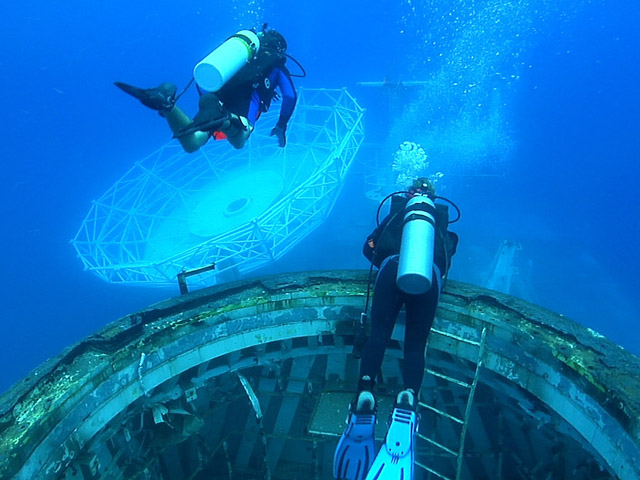 Divers explore the superstructure of the Gen. Hoyt S. Vandenberg artificial reef in the Florida Keys National Marine Sanctuary off Key West, Fla., Friday, May 29, 2009. After a dramatic May 27 scuttling, the Vandenberg opened to the public Saturday, May 30. The Vandenberg's hull rests on the sandy bottom in about 145 feet of water, but the 523-foot-long former U.S. Air Force missile tracking ship is so massive that its superstructure begins just 45 feet below the sea surface. (Haig Jacobs/Florida Keys News Bureau/HO)
Divers explore the superstructure of the Gen. Hoyt S. Vandenberg artificial reef in the Florida Keys National Marine Sanctuary off Key West, Fla., Friday, May 29, 2009. After a dramatic May 27 scuttling, the Vandenberg opened to the public Saturday, May 30. The Vandenberg's hull rests on the sandy bottom in about 145 feet of water, but the 523-foot-long former U.S. Air Force missile tracking ship is so massive that its superstructure begins just 45 feet below the sea surface. (Haig Jacobs/Florida Keys News Bureau/HO)
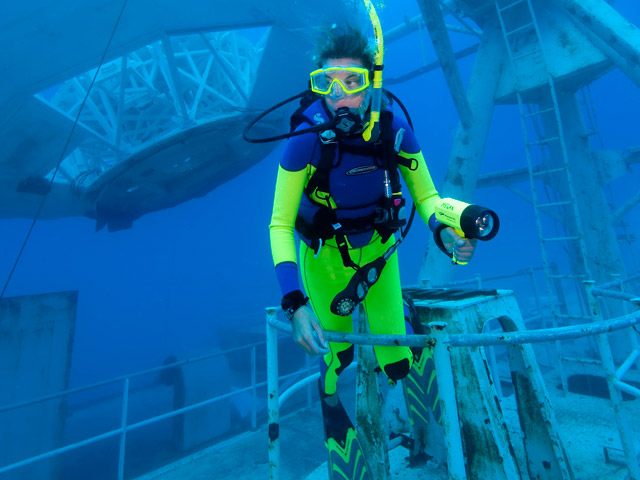 Diver Jaclyn Skafas explores the superstructure of the Gen. Hoyt S. Vandenberg artificial reef in the Florida Keys National Marine Sanctuary off Key West, Fla. Friday, May 29, 2009. After a dramatic May 27 scuttling, the Vandenberg opened to the public Saturday, May 30. The hull of the vessel rests on the sandy bottom in about 145 feet of water, but the 523-foot-long former U.S. Air Force missile tracking ship is so massive that its superstructure begins just 45 feet below the sea surface. (Stephen Frink/Florida Keys News Bureau/HO)
Diver Jaclyn Skafas explores the superstructure of the Gen. Hoyt S. Vandenberg artificial reef in the Florida Keys National Marine Sanctuary off Key West, Fla. Friday, May 29, 2009. After a dramatic May 27 scuttling, the Vandenberg opened to the public Saturday, May 30. The hull of the vessel rests on the sandy bottom in about 145 feet of water, but the 523-foot-long former U.S. Air Force missile tracking ship is so massive that its superstructure begins just 45 feet below the sea surface. (Stephen Frink/Florida Keys News Bureau/HO)
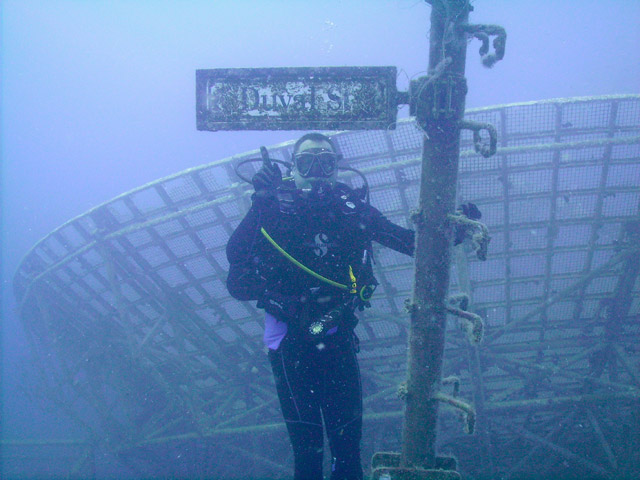
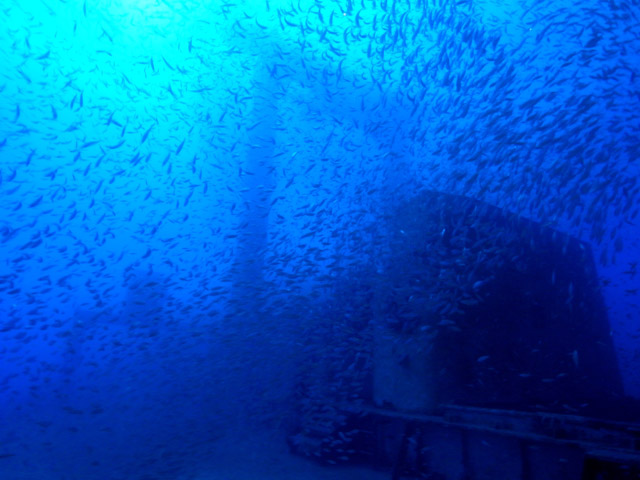

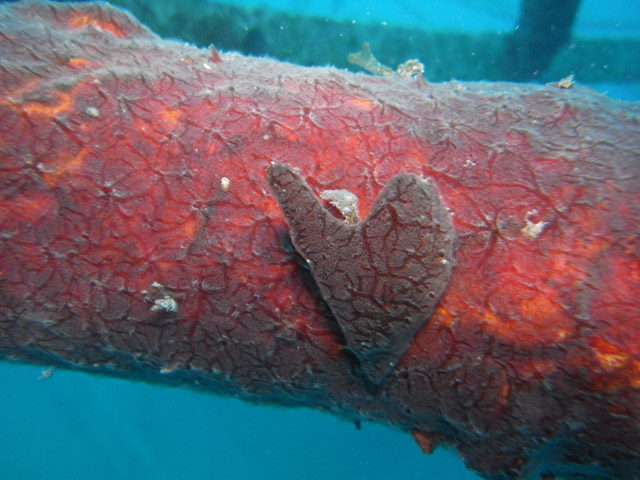

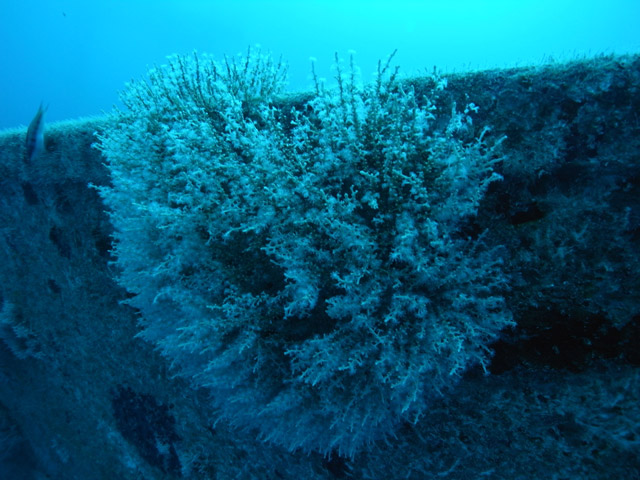
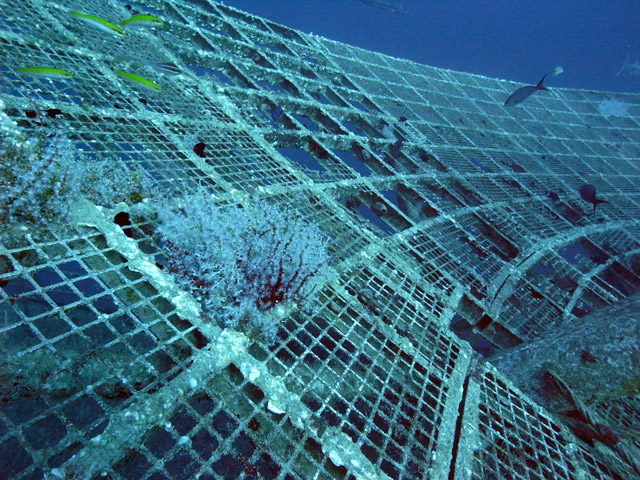
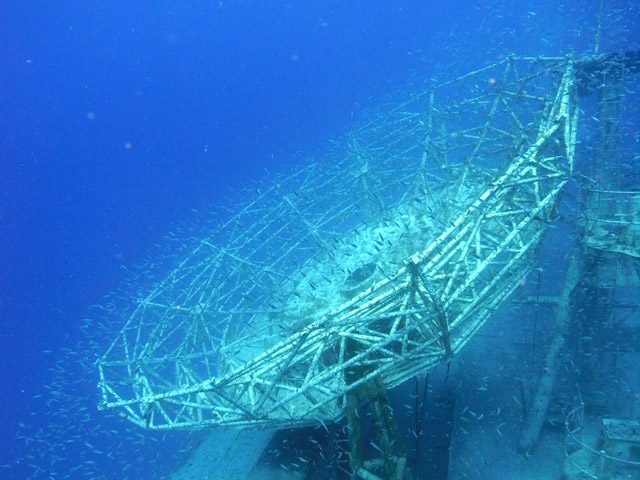
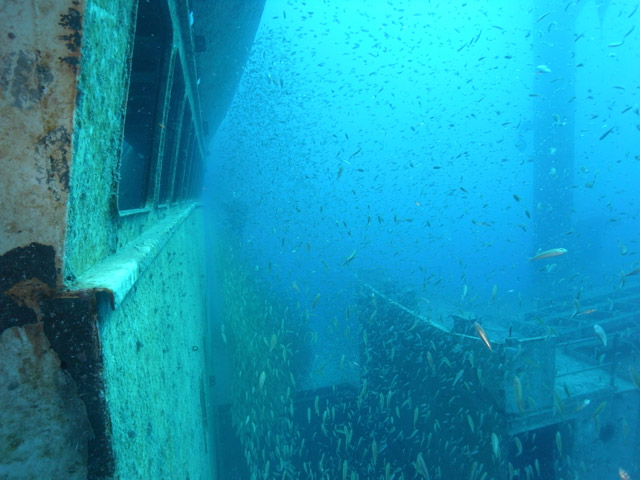
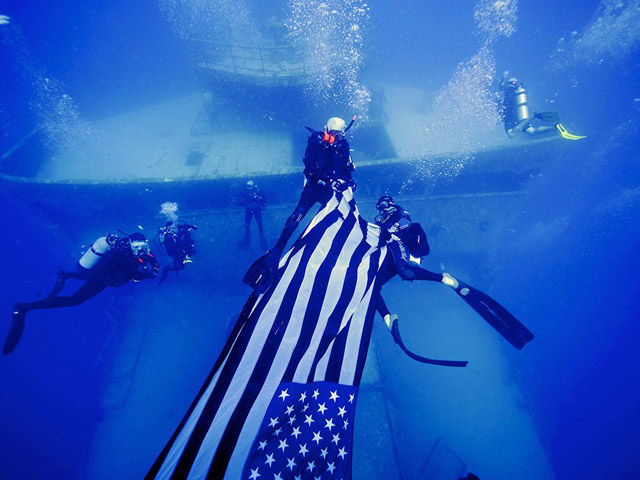
On May 27, 2009, after more than a decade of planning and funding totaling $8.6 million, the ex-military missile-tracking ship, the USNS Gen. Hoyt S. Vandenberg that once tracked space launches off Cape Canaveral, Fla., and monitored Soviet missile launches during the Cold War, was added to a list of military vessels purposely sunk off the Florida Keys to become artificial reefs, thus preserving a bit of U.S. history.
Ship Details
Gen. Hoyt S. Vandenberg, a former military troop transport and former missile-tracking ship was chosen from about 400 decommissioned military ships rusting away in "Ghost Fleets" across the country. Gross Tonnage (Volume): 17,120 tons. Length: 524 feet 10 inches • Beam: 71.5 feet • Draft: 24 feet. Height after sinking: 100 feet from keel to the highest point. Stacks, masts and antennas were trimmed to allow 40-45 feet of clearance from the surface.
The ship first saw duty as a U.S. Army troop transport named the Gen. Harry Taylor. It became the Gen. Hoyt S. Vandenberg in 1963 and tracked the U.S. space program's launches off Cape Canaveral. It also served in the Pacific monitoring U.S. defense missile test launches and eavesdropped on Russian missile launches during the Cold War. Port Canaveral, Fla., was the Vandenberg's last active duty homeport beginning in 1976.
The Vandenberg was formally retired in 1983 and was transferred to the James River Naval Reserve Fleet. But, according to Patrick J. Utecht, who managed the ship's electronic systems, a team of six technicians would visit Vandenberg every six months to power up all shipboard electronics and make any necessary repairs. Despite the state of readiness, the ship was never used again and in 1993 was formally struck from the naval register and transferred to the U.S. Maritime Administration.
The ship received its most public exposure when cast as a Russian science ship in "Virus," a 1999 motion picture starring Jamie Lee Curtis, William Baldwin and Donald Sutherland.
Project Costs
Approximately $8.6 million with funding coming from the Monroe County, Fla.; the Florida Governor’s Office of Tourism, Trade and Economic Development; City of Key West; U.S. Maritime Administration; the Florida Legislature; Florida Fish and Wildlife Conservation Commission; Florida Keys & Key West tourism council, and the National Oceanic and Atmospheric Administration as well as industry and private donations. Banks that provided loans included First State Bank of the Florida Keys, BB&T and Orion.
Preparing The Ship
Before arriving in Key West April 22, 2009, the ship had undergone months of inspections and about 75,000 man-hours worth of cleanup in two Norfolk, Va. shipyards to remove contaminants that were deemed potential hazards to the marine environment, and were required by nearly 18 different local, state and federal agencies involved to receive the necessary federal and state permits to sink the ship in the sanctuary.
Pollutants removed included 81 bags of asbestos, 193 tons of materials that contained potentially carcinogenic substances, 46 tons of floatable refuse, 300 pounds of mercury-containing materials and 184 55-gallon drums of paint chips.
Vandenberg Timeline: From Launch To Artificial Reef
On March 31, 2007 the Vandenberg was withdrawn from the James River Naval Reserve Fleet and towed to Colonna's Shipyard in Norfolk, Va., for cleanup and preparation.
Veterans Of The Vandenberg Bid Farewell To Their Ship
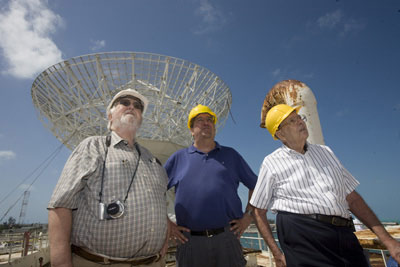
Four veterans who served on a former missile-tracking ship trekked to Key West to gather alongside the Gen. Hoyt S. Vandenberg and bid the ship a final farewell as it is prepared to be scuttled as an artificial reef seven miles off of Key West.
Location
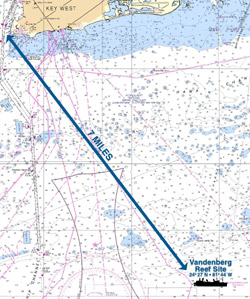
Locator map of the Vandenberg Artificial Reef site off Key West, Fla., in the Florida Keys National Marine Sanctuary. (Click to enlarge)
At 24°27' N, 81°44' W. Approximately seven miles south of Key West International Airport in nearly 150 feet of water in the Florida Keys National Marine Sanctuary. The site was chosen 10 years ago, with input from interested parties. Permitting was required from 18 different agencies. More than 130 dives were conducted to survey the site. It is hard barren bottom with no coral and no submerged cultural resources (historic wrecks).
Sink Date: May 27, 2009
Explosive cutting charges were detonated to open holes in the lower deck. Marine engineers who had predicted the ship would sink in less then three minutes were correct: Vandenberg slipped beneath the surface in 1 minute, 45 seconds, landing upright on the bottom.
Watch the Vandenberg Sink in Real Time
Vandenberg On The Bottom
Video: Divers Descend On Vandenberg For the First Time Ever
Video: Vandenberg Artificial Reef Is Open
Florida Keys News: Wreck of the Vandenberg, A Diver's Mecca
Florida Keys News: Diving the Big Three: Spiegel Grove, Thunderbolt and Vandenberg
The ship is now the second largest vessel in the world ever purposely sunk to become an artificial reef. The sinking also represents the southernmost part of the Florida Keys Shipwreck Trail, a series of intentionally sunk vessels that begins off Key Largo with a former Navy landing ship dock, the Spiegel Grove (sunk in 2002), and ends with the Vandenberg.



